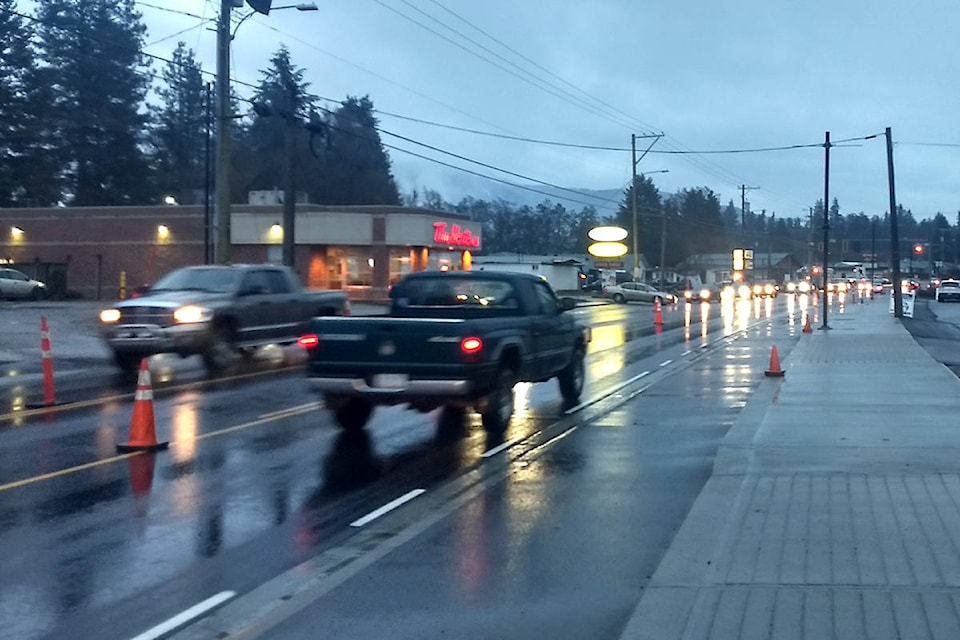Now that the first phase of the Columbia Avenue redevelopment project has wrapped up, city staff have undertaken an analysis of lessons learned.
The project’s first phase was the largest infrastructure project the city has done in recent years. Future phases of the project will be done in smaller increments, which alone will address some of the difficulties that arose.
The report says that given the size of construction, the project went remarkably well.
“Overall we had a very solid communication plan and a very solid traffic management plan. However, there are little things we could adjust for the next time to make sure they work a little better,” said Castlegar CAO Chris Barlow.
A major issue during the project was the long traffic backups, mostly due to the fact that there was no bypass available for that section of Columbia Avenue.
This won’t be as much of an issue for the rest of the Columbia Avenue projects as bypasses are available for most of the remaining sections. The city has identified that another way to improve traffic flow and on-site communication would have been to use reader boards with updated wait times and notifications of the days when alternate routes should be taken.
Strengthening contract administration and adherence was also cited as something that could be improved.
“Contract language was good, but the contractor was allowed to deviate from that language in some instances early, which exasperated problems later on,” according to the report.
During the final pre-construction stages of the project, some major changes had to be made to accommodate higher-than-expected costs, including reducing the scope of the project and reducing the contingency fund from 10 per cent to five per cent.
Ensuring a 10 per cent contingency for future projects is recommended in the report.
The final costs for the project have not been calculated as the city is still waiting on some invoicing from the contractor and FortisBC.
“This was a major infrastructure project, that we have completed,” said Barlow. “The community should be very proud of it.”
Weaving bike lanes
Many residents have been confused by the fact that the new bike lanes curve rather than stay in a straight line beside the road. Barlow explained that the original design called for straight bike lanes, but BC Transit insisted that the bike lanes could not be next to the road wherever there was a bus stop.
“What they didn’t want, was people stepping directly off the bus onto a bike lane,” said Barlow.
Next phase
The next phase of the Columbia Avenue redevelopment project will be a section from 21st Street and 24th Street (approximately from Kootenay Industrial to the hill that leads up to Kinnaird Elementary School). Design and grant applications are scheduled for this year with construction happening in 2020.
The next phase will be very similar to the first, and will include underground infrastructure, repaving and bike lanes. That section of road falls under the Ministry of Transportation’s responsibility, so they will be footing part of the bill.
Future phases are yet to be scheduled and will depend on when grants are available.
“The goal is to be able to replace the majority of Columbia Avenue to a similar cross section and make sure the majority of underground infrastructure has been replaced and is ready for redevelopment,” said Barlow.
